Robbie Ray’s always walked a lot of guys. It’s just part of his aesthetic. His stuff’s electric, and he throws it with a ton of purpose, pouring every ounce of himself into his violent delivery to the extent that he grunts with each pitch like Rafael Nadal on clay. He just doesn’t always know where it’s going.
He walked 4.1 batters per nine innings as a minor-leaguer and, so far, he’s averaged 4.2 over seven seasons in the majors. As long as he’s pairing it with an elite K/9 north of 12 and a good-enough groundball rate over 40 per cent — as he did from 2016 through 2018 when he pitched to a 3.93 ERA over 83 starts with the Arizona Diamondbacks — he can be perfectly effective as a major-leaguer. He can be an all-star and get Cy Young votes, as he did in 2017.
But Ray’s also always been a bit of tinkerer. He adjusted his delivery after a strong rookie season in 2015, which led to a strikeout surge the year following. But his home run rate soared, too, so Ray tweaked his repertoire, ditching a sinker he was throwing 25 per cent of the time in favour of more four-seamers and a curveball.
That produced the all-star campaign, but in 2018, Ray got hurt and struggled even more with his command than he did prior. And in 2019, he was finding the zone less than ever before, routinely needing 90+ pitches to get through five innings. When he was on the plate, he was getting hit hard, allowing the eighth-highest HR/9 across MLB. So, he made more changes — this time to his delivery. And those adjustments really put him off course.
Ray tweaked the way he stood on the mound pre-pitch; he raised his hands up above his head in his wind-up; he stayed more closed off to the plate at the height of his delivery. And, most noticeably, he shortened his arm angle, tucking his hand in at his hip as he drove towards the plate, instead of keeping his arm straight and letting his hand hang down at his thigh.
His delivery went from looking like this in August, 2019:
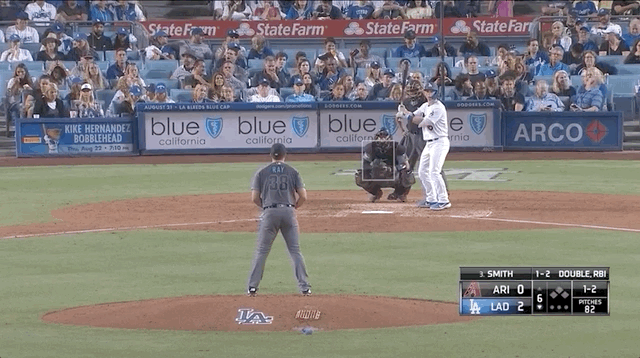
To this at the beginning of the 2020 season in July:

He looks like two completely different guys. And he pitched like it, too, as his walk rate shot off towards orbit, with his homer rate trailing not far behind. Ray walked a batter an inning through his first 31 frames this season. He allowed nine home runs over seven starts. When he was acquired by the Blue Jays at the trade deadline, he was leading the National League in walks and earned runs.
That’s about the time Ray figured the new delivery wasn’t it. So, he reversed course, not quite all the way back to his old delivery, but towards something close to it. Here’s what he looked like in his debut outing with the Blue Jays last week against the Miami Marlins.

“When I made the shortened arm, I was trying to be more consistent — find an arm swing that was more consistent for me and that allowed me to command the ball better. Obviously, it's no secret that I had trouble with that,” Ray says. “Maybe I was losing some deception with it. It's something I was looking into. I think it was just part of the process to help me find where I'm at today.”
Remember, this is all in the span of 12 months. Ray’s pre-pitch set-up has gone from a wide stance to a narrow one, to somewhere in between:
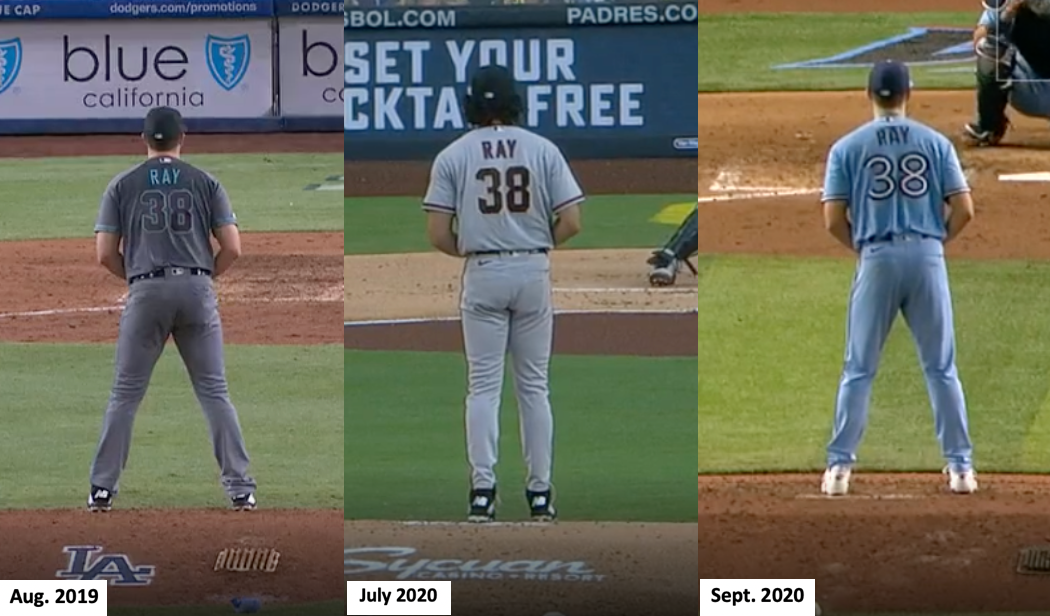
He’s taken his hands in his wind-up from about chest-height, to up above his head, to now back down near his waist:
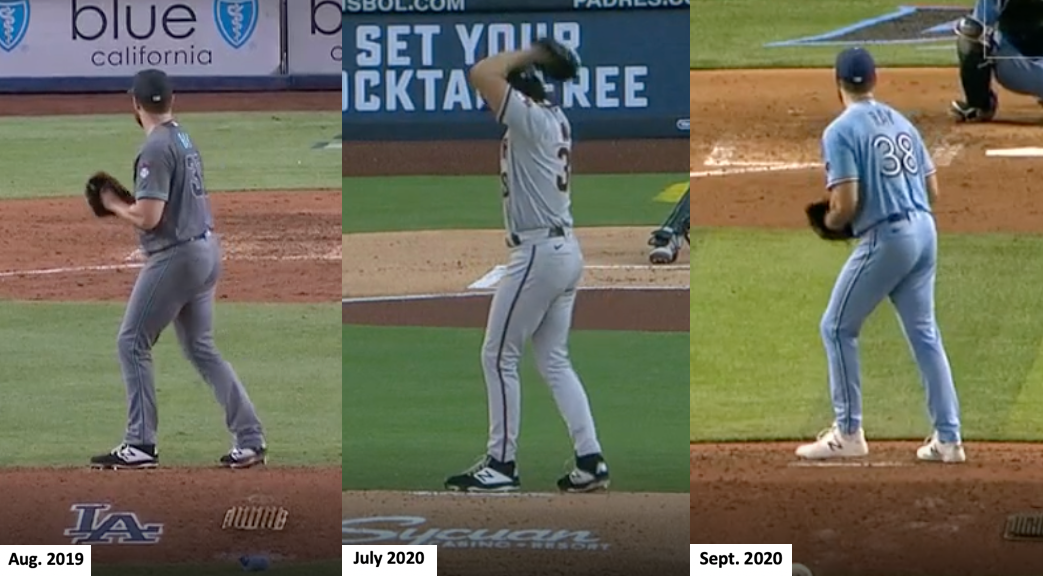
He’s gone from the short-armed delivery he was playing around with earlier this season back to the straight-armed one he threw with earlier in his career:

And his arm slot has gone from somewhere over the top, to out away from his body, to back towards 11 o'clock:
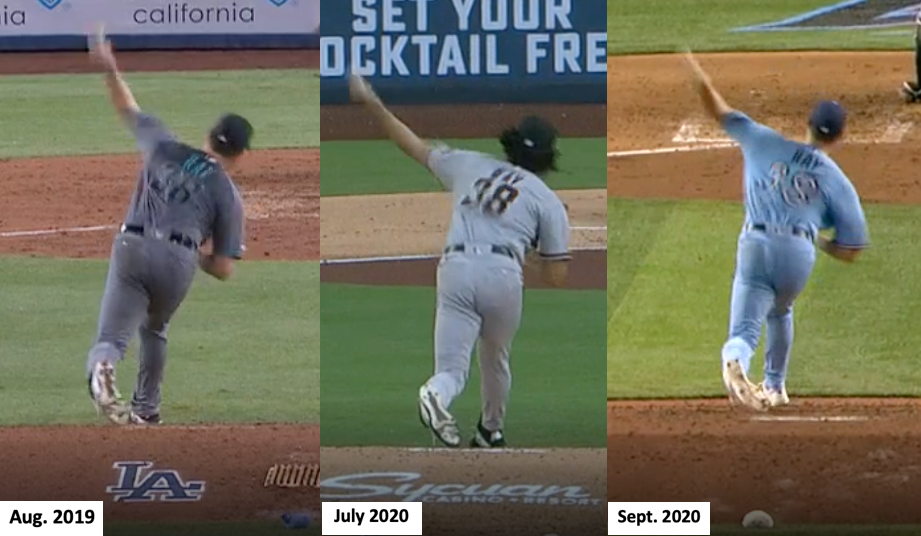
That release point is key, because if Ray can’t have consistency with where the ball starts, he can’t have consistency with where it ends up. And Ray’s horizontal (first image) and vertical (second image) release points over the last 18 months — on his fastball especially — have been anything but stable:
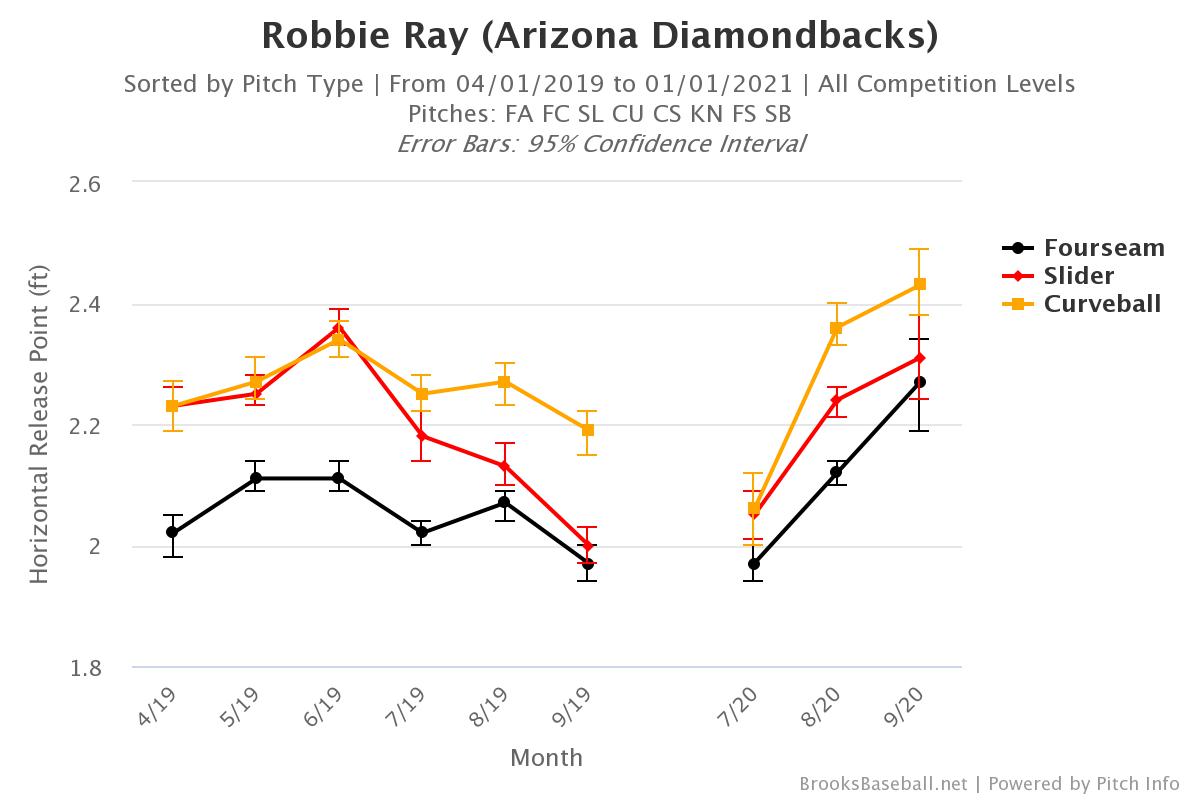

Of course, pitchers can spend entire careers trying to nail down a steady, repeatable release point. It’s incredibly difficult to maintain when you’re throwing a ball as hard as big-leaguers do 100 times an outing. But pitchers like Ray, who try to walk the effectively wild tight rope, can’t afford to miss much more often than they inherently do.
“Watching video and watching his progression and the changes that he made in Arizona, I think he's in a good place right now,” says Blue Jays pitching coach Pete Walker. “I think he feels like his delivery is fluid again and it's repeatable. It's still a little bit of a work in progress. But he feels, I think, a lot more comfortable than he did. I'm very happy with his arm slot and the consistency of it right now.”
And so, we go to Sunday’s first inning in Ray’s first start with his new team. The good news is he struck out the side. The bad news is he also allowed three runs on a couple singles and a homer, walked a batter, had separate mound visits from his catcher and pitching coach, and needed 35 pitches to get through it.
“That first inning was a little tough. I felt like I made some really good pitches,” Ray says. “That fastball (for the home run) was elevated up and away. So, maybe focus next time should be more down with the heater in that situation instead of up in the zone. But I felt like I executed my pitch. And the guy clipped it.”
Ray’s second inning was better. He walked another batter but retired the other three he faced, getting back to the dugout after 14 pitches. And he got out of his third inning after 16 thanks to left fielder Lourdes Gurriel Jr., gunning down a runner at third.
But the fourth brought more trouble, as Ray allowed another homer and issued a two-out walk on four pitches that weren’t particularly close. A groundball got Ray out of the inning but his day ended there, with four runs in over four innings he needed 83 pitches to complete.
It’s tough to call it progress based on those results. But Ray’s primary concern at the moment is the process as he tries to iron out his delivery and get back to the guy he once was. As long as he felt better on the mound than he has, that’s all that matters.
“My body, my mechanics, everything feels really good right now. I feel like it's right there. I feel like everything is coming together,” Ray says. “My arm slot, it feels really good where it’s at right now. With my delivery, I feel like I'm just trying to be athletic and feel the aggressiveness out front. I feel like I did a pretty good job of keeping my tempo in a good window where I'm not too fast and I'm not too slow. I feel like that was a good step forward.”
Of course, time soldiers on. The Blue Jays have only 20 games remaining and post-season positioning to play for. Over the next 18 days, they will encounter the New York Yankees 10 times — a stretch of play that will likely decide which of those two teams finishes second in the American League East.
The Blue Jays need wins. And Ray needs opportunities to sort himself out on the mound. But the best way to satisfy both of those needs is potentially with Ray pitching in relief. He’s already done it once last week against Miami. And with the Blue Jays looking ahead at a pair of off days after each of the next two series, he might have to do it again.
Which would be fine. In relief, Ray could be deployed in advantageous situations and wouldn’t have to worry about getting through five innings. He could come in and air it out for two of three. He could be lifted if he doesn’t have it or he could be stretched out if he’s cruising. He could help take some of the load off an overworked Blue Jays bullpen.
The most important thing for Ray is that he’s on a major-league mound continuing to make adjustments. His old self is in there somewhere. He just has to find it.
“He's super close. He's getting there every single start,” says Caleb Joseph, who caught Ray on Saturday and was his teammate in Arizona. “Don’t forget, this is only the third time that he’s really gone back to that old wind up. I mean, you can spend as much time as you want on a different wind up — going back, it's just going to take a second.”
